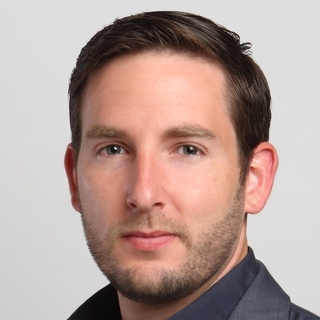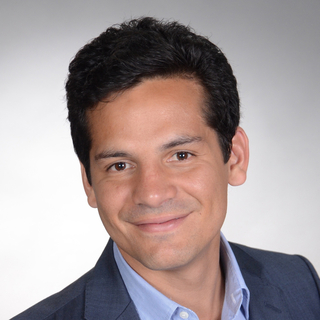11 Essential Financial Analysis Interview Questions *
Toptal sourced essential questions that the best financial analysts can answer. Driven from our community, we encourage experts to submit questions and offer feedback.
Hire a Top Financial Analyst NowInterview Questions
Working capital is the sum of a company’s current assets minus its current liabilities.
Working capital measures the health and efficiency of a company’s liquidity. It can include a range of line items, but most common are: cash, inventory, accounts receivable, accounts payable, debt due within one year and other short-term accounts. If net working capital is positive it indicates that a company can pay off its debts quickly.
Goodwill is an asset item that accounts for the difference between the price paid for it and its fair value at the time of acquisition.
Typically Goodwill is positive and this difference represents the intangible value of the acquired asset, such as brand name, exclusive sales contracts or patents/IP. However, if the asset was purchased under a distressed scenario, it can also be a negative line item.
The quick ratio accounts for less current assets than the current ratio (it excludes inventory and prepaid expenses). As such, it is a sterner test of a company’s liquidity
Also commonly referred to as the acid test ratio, the quick ratio is a test of how quickly a company can convert its assets into cash to pay off debts. The weakness of this ratio is that it includes accounts receivables. These accounts cannot be reliably called in so quickly and are never certain to all be paid off in their entirety. For that, a more prudent way of calculating the quick ratio would be to exclude newer (and farther out) receivables and accounts that could be doubtful.
Apply to Join Toptal's Consulting Network
and enjoy reliable, steady, remote Freelance Financial Analyst Jobs
As opposed to current liabilities, a long term liability is an obligation that is due beyond the term of one year into the future.
For example, if a company issues a 5 year bond, for its first 4 years it will be classed as a long-term liability. In its final year, as it approaches repayment, it will then move to the current portion of liabilities.
The majority of long term liabilities come in the form of debt instruments, such as bonds or mortgages. However capital leases and pension liabilities are also common items.
Below are three acceptable answers to this question:
- Debt provides a tax shield from the deduction of interest payments.
- As a capital instrument that sits higher than equity in the creditor hierarchy, it is generally also a cheaper form of financing. This works to reduce a company’s cost of capital (WACC).
- Raising debt does not dilute the ownership stake of current investors.
Debt and equity have a symbiotic relationship, as shown via a company’s optimal capital structure calculations. Because it is cheaper than equity, a common question is: why not just fund the entire company with debt? The answer is that debt is good in moderation, too much of it and the pressure of meeting interest/principal payments and performance covenants would be too large. Equity is also an important component in a company because it psychologically aligns the holders towards achieving long-term growth with the business.
A company’s cash conversion cycle is 50 days. Its days of sales outstanding is 45 days and days of inventory outstanding is 63 days. What is the days of payables outstanding?
58 days.
Cash Conversion Cycle = Days of Sales Outstanding + Days of Inventory Outstanding - Days of Payables Outstanding
Days of payables outstanding (DPO) shows how long it takes a company (in days) to pay off its invoices to its own creditors. The formula is:
Ending Accounts Payable / ( Cost of Sales / 365 )
For inventory reliant companies a more appropriate formula is:
Average Accounts Payable / ( Purchases / 365 )
The cash conversion cycle is a measure of the time each net input dollar is tied up in the production and sales process before being converted into cash through sales completion. DPO is subtracted in this formula, as it is essentially a form of financing provided to the company from its own suppliers.
Dividends received are classified as cash flows from operating activities and dividends paid as cash flows from financing.
Dividends paid out are a reward to shareholders and can be regarded as the ‘cost of equity’, for that they are classified under the financing operations of the business. Dividends received class under operating activities, because they reflect income earned.
Under IFRS there are more permutations. Classification is at the discretion of the accountant, as long it maintains a consistent policy:
Dividends paid: may be classified as operating or financing cash flows
Dividends received: may be classified as operating or investing cash flows
( Net income - preferred dividends ) / weighted average # shares outstanding
Earnings per share shows the amount of income that can be allocated to one share in a company. Preferred dividends are stripped out because the formula is measuring income to common stockholders. Preferred stockholders received a guaranteed dividend before any other distributions.
Diluted earnings per share is an extension of the formula where it accounts for all securities that could convert into equity. For example: convertible notes, warrants or employee stock options. Because this would increase the amount of common stock in the company, it is lower in comparison to basic EPS.
During periods of inflation, describe the impact of a LIFO inventory method on the financial statements of a business?
Under scenarios of inflation, LIFO will result in higher COGS and understate the inventory value on the balance sheet.
LIFO = ‘last in, first out’. This is a measure of inventory accounting where the latest price of producing a piece of inventory is recorded on the income statement when a sale occurs. When prices are rising in an inflationary environment this will result in the most expensive costs of production being accounted for in the income statement. Conversely, in the balance sheet the inventory being held will not reflect the higher value that it is worth in the market.
For FIFO (‘first in, first out’) accounting the opposite will occur. Whereby COGS are understated and the balance sheet will be inflated.
Return on Equity.
The DuPont Model breaks down ROE into three components: Net profit margin, operating leverage and financial leverage.
ROE = net profit margin * asset turnover * equity multiplier
( Net Profit / Equity ) = ( Net profit / Sales ) * ( Sales / Average Total Assets ) * ( Average Total Assets / Average Equity )
This formula allows analysts to identify the source of relative profitability within a company and demonstrate which area is driving returns.
FX gains losses and actuarial gains/losses.
Other comprehensive income shows items that have been exluded from net income on the income statement.
Items appear in other comprehensive income when they have not yet been realized. Items become realized when their underlying transaction has been completed, for example, when an investment is sold. Once the transaction has been made, the gains/losses can be crystallized and shown as a line item in the main P&L.
There is more to interviewing than tricky technical questions, so these are intended merely as a guide. Not every “A” candidate worth hiring will be able to answer them all, nor does answering them all guarantee an “A” candidate. At the end of the day, hiring remains an art, a science — and a lot of work.
Why Toptal
Submit an interview question
Submitted questions and answers are subject to review and editing, and may or may not be selected for posting, at the sole discretion of Toptal, LLC.
Looking for Financial Analysts?
Looking for Financial Analysts? Check out Toptal’s financial analysts.
Evan Fisher
Evan is a former investment bank VP offering a simple value prop: better-than-Wall-Street quality documents and advice at a fraction of the price. His work resulted in over $5 billion invested in SMEs by top-tier investors, including a16z, SoftBank, Tiger, and more. He has sat in every seat at the boardroom table as a director, shareholder, executive, and advisor. Evan enjoys helping businesses plan, refine their strategies, prepare for corporate actions, and hone their capital-raising approach.
Show MoreCarlos Barrozzi
Carlos, a CFA Charterholder, has extensive investment banking and principal investing experience at BofA Merrill Lynch and Resiliens Capital. He has advised and invested in $4+ billion of equity and credit investments across both North America as well as emerging markets. He consults to meet fascinating investors, managers, and entrepreneurs while leveraging his financial expertise to drive value across a variety of unique business problems.
Show MoreGeorge Mathew
George has worked on M&A, IPO, and fixed income transactions with a cumulative deal value of $20+ billion at renowned Wall Street banks including Salomon Brothers and Morgan Stanley. A Fulbright scholar, George is active in the fintech startup sector and was on the management committee of Houston’s largest independent bank. At Toptal, he enjoys refining business models and optimizing financing structures to maximize flexibility and profitability.
Show MoreToptal Connects the Top 3% of Freelance Talent All Over The World.
Join the Toptal community.


